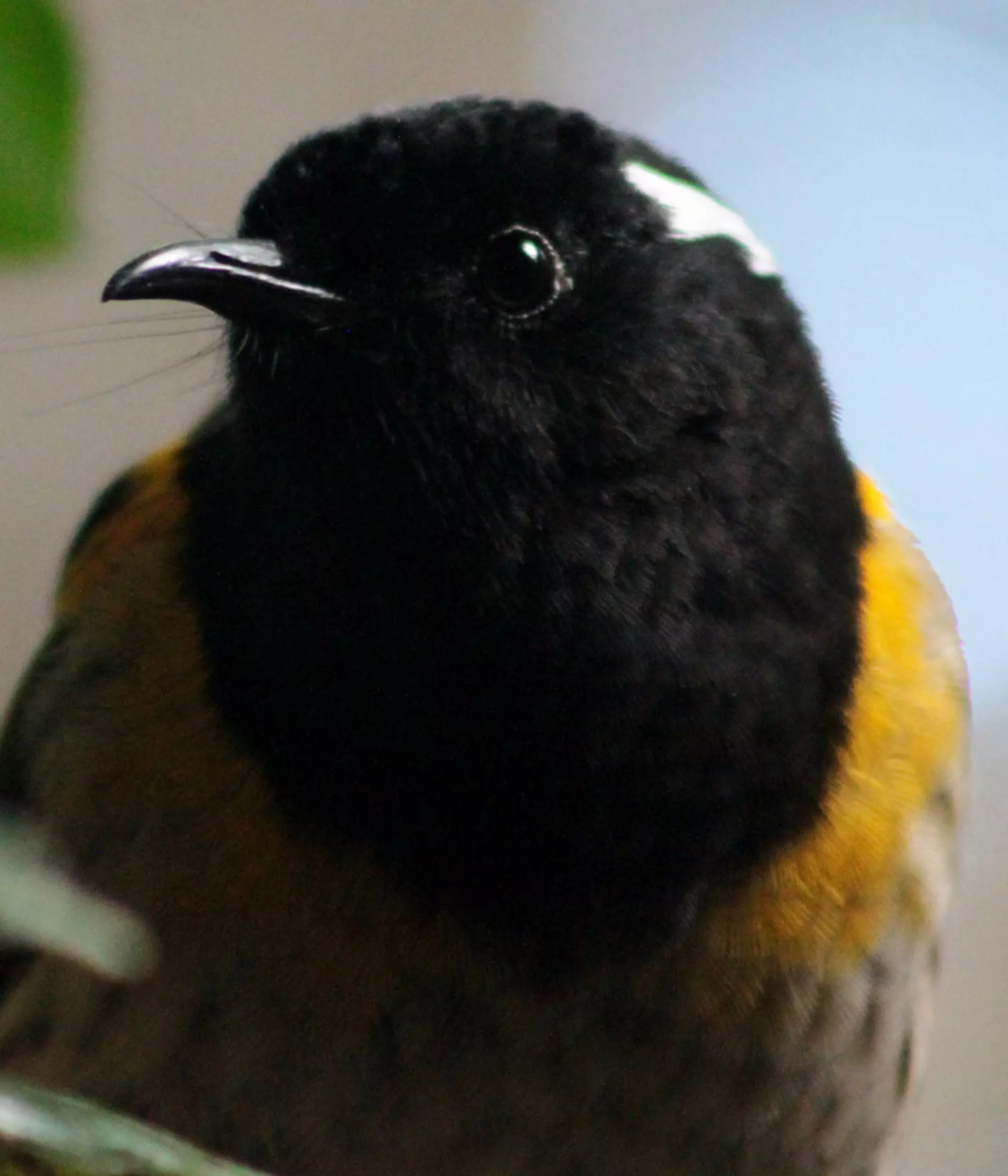Prof. John G Ewen
Professor
Dr Patricia Brekke
Research Fellow
Hihi facts
Hihi are a small 30-40g bird from New Zealand which we are working to save from extinction. They are sexually dimorphic, and males have bright yellow shoulders, a black head with white tufts on their ears which they can flare up, whilst females are a more subtle olive-brown. Hihi feed on feed on nectar, fruit and invertebrates, and their common ‘tzit tzit’ sounding call is believed be the reason for their other name, the stitchbird.
Hihi are especially vulnerable to changes in habitat because they are highly sensitive to introduced predators and can be outcompeted by more dominant birds when food is scarce. This makes their presence a positive sign for the health of a forest. There are now over 2000 hihi spread across seven populations in New Zealand, as our work continues to recover hihi populations and help restore their forest ecosystems.
Hihi call:
Hihi meaning
Hihi’s are named after the Māori word for ray of sunshine and were pushed to brink of extinction following European colonisation of New Zealand. The colonisers cleared forests and introduced new mammal predators like rats and domestic cats, which wiped out the mainland hihi population. The hihi became restricted to a single offshore island in Northern New Zealand by around 1890. The hihi managed to cling on in this single island population for a century, until conservationists stepped in.
Hihi conservation in New Zealand
We’re working at the cutting-edge of conservation translocations, by developing a new framework to create practical routes to translocation success for hihi. Our work is crucial, not only for hihi, but for improving the success of all wildlife conservation translocations globally, through providing a uniquely detailed case-study that's over thirty years old.
Hihi recovery
The journey of recovery began in 1980 and has been carefully recorded ever since. This has given the ZSL Institute of Zoology invaluable data to develop a better conservation approach for these small birds. We have implemented a proactive and evidence-based approach combining careful monitoring and adaptive management. Together, we have achieved a substantial boost to number of populations, and we’re continuing to innovate our approach.
Our evidence based conservation approach:
Goal 1: Finding sites favourable to the establishment of unmanaged or managed hihi populations and reintroduce hihi to these.
Goal 2: Optimising management to allow re-introduced hihi populations to persist in otherwise unsuitable habitats.
Goal 3: Develop a strategy for ongoing exchanges among hihi populations to ensure genetic viability while managing disease transmission risks.
Goal 4: Establishing a unified national approach to hihi management.
Helping life everywhere
Our involvement isn’t just great news for hihi, we’re helping reframe wildlife conservation translocation programmes globally. Our work is becoming a case-study to restore diversity of life everywhere, whether it be reintroducing tiny dormice or translocating greater-one-horned rhino.
Today, as human activities push our planet to its limits, evidence-based conservation translocations are more vital than ever. Subscribe for updates on our conservation translocation projects that are restoring wildlife across the world.
